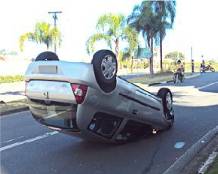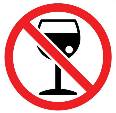DUI STATISTICS

It's been proved that driving after doing drugs or drinking alcohol is not safe.
Still, about FIFTY percent of all non-fatal traffic accidents are alcohol related.
FORTY percent of all traffic fatalities in the US are caused by impaired drivers.
About 3 in every 10 Americans will be involved in an alcohol-related crash during their lifetime.
50 to 75% of convicted DUI offenders continue to drive on a suspended license.
About 1,700 persons are killed each year by drivers under the influence of drugs or alcohol, according to the DUI statistics.
In the US on average, 900,000 motorists are arrested each year for DUI/DWI and one-third of those are repeat offenders.
Drunk and impaired drivers injure or kill somebody every TWO minutes. Every 30 minutes someone dies from a drunk driving collision or incident.
About 11% of all those arrested for drunk drinking are under 21 year of age.
Drunk driving costs each adult about $500/year in the US.
According to a study by the University of Michigan, intoxicated victims of car crashes sustain worse injuries and are more likely to be seriously injured than sober victims.
Car crashes are the leading cause of death for adolescents, and 1 out of 3 of those crashes is alcohol related.
Among race demographics, whites (ages 12-20) had the highest percentage of underage past-month alcohol use at 30.4%. Asians had the lowest rate at 16.1%.
In 2007, sixty-four percent of young drivers in passenger vehicles involved in fatal crashes who had been drinking were not wearing a safety belt.
About Alcoholism
Alcoholism is a disease classified as Chronic, Progressive and eventually fatal. Alcohol acts a depressant in the central nervous system.
Alcohol is a drug that first affects a person's judgement, followed by concentration, coordination and balance. Also a person's reaction time, eye movement and the ability to multi-task are affected by the consumption.
Alcohol works on a person's body as a sedative. Its mind altering abilities changes the way a person perceive, think and act. Coordination and judgement are also highly affected.
OTHER EFFECTS INCLUDE: loss of inhibition, euphoria, mood swings, relaxation, decreased alertness and motor skills.
SYMPTOMS: alcohol breath smell, slurred speech, red eyes, glassy eyes, staggering speech, drowsiness.
Alcohol causes physical and psychological dependency in persons of all ages, sexes and social status.
BAC (Blood Alcohol Concentration)LEVEL shows the percentage of alcohol in a person's bloodstream. A person is considered intoxicated at a BAC LEVEL of .08%. Time is the only thing that can reduce the BAC LEVEL, no fresh air, coffee, water or exercise will do it. A person should wait ONE hour for every ounce of alcohol consumed.
A 12-oz. can of beer, a 5-oz. glass of wine and a 1 1/2-oz. shot of liquor all have about the same amount of alcohol.

If you are planning on going out, don't be part of new DUI statistics:
- choose abstinence
- drink with moderation
- make sure you have a designated driver
- use public transportation
- call a taxicab
- plan on spending the night
- wait long enough until the effects of the drug has passed
DUI Lawyers and Law Firms specialize in legal cases of DUI (Driving while Under the Influence)
Return from DUI Statistics to Home page.
DISCLAIMER: The law will vary depending on your state, jurisdiction and the specifics of your case. The information provided by USAttorneyLegalServices.com is intended for educational purposes only. The content on this site should NOT be considered professional legal advice or a substitute for professional legal advice. For such services, we recommend getting a free initial consultation by a licensed Attorney in your state.



